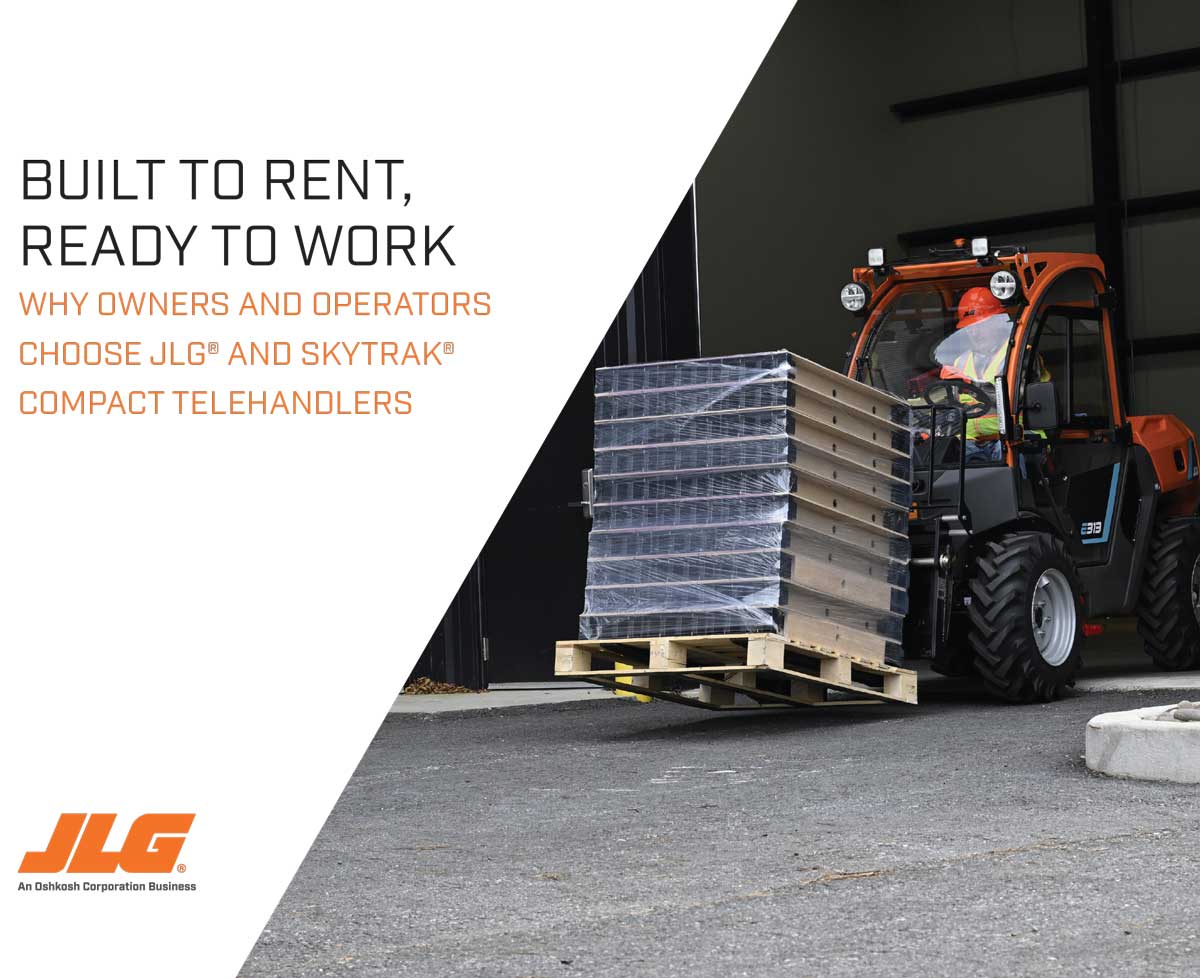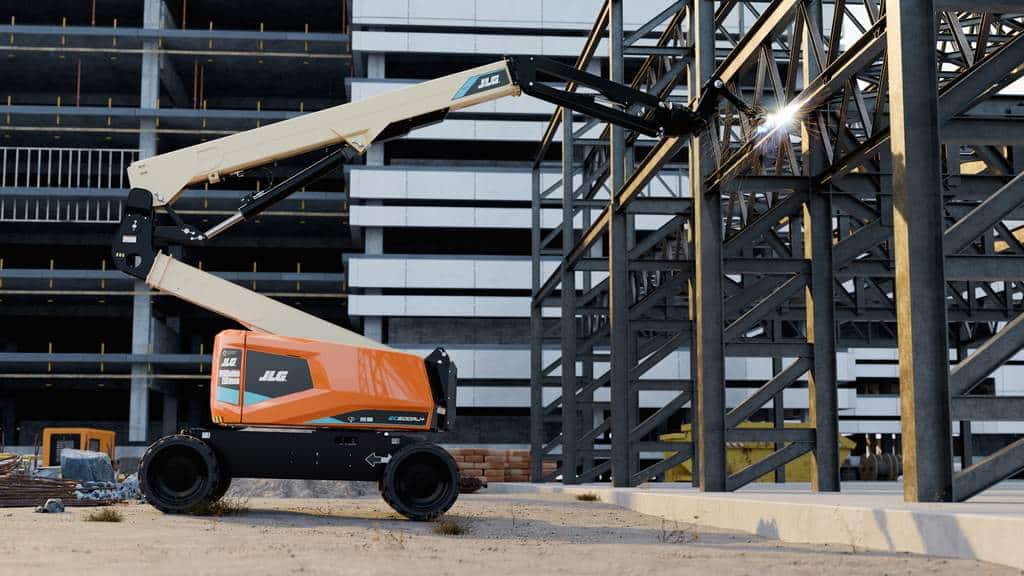Essential Scissor Lift Maintenance: Ensure Safe and Productive Operations with These Tips
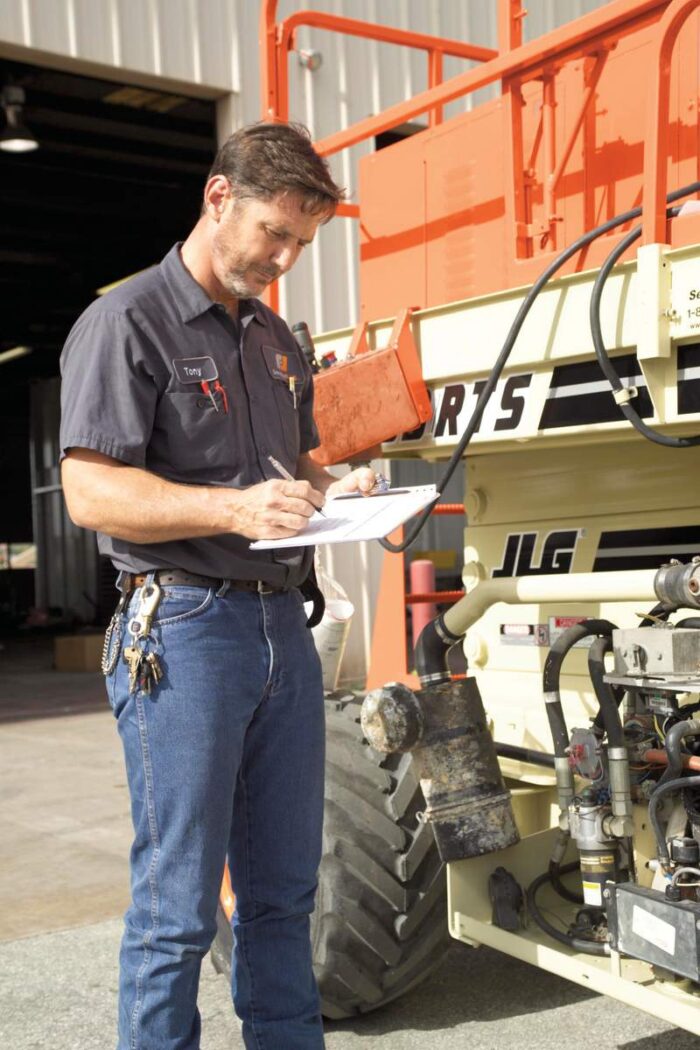
It’s become a fact of life: When you need to work for extended periods of time in high, hard-to-reach places, you turn to mobile elevated work platforms (MEWPs). Over the years, scissor lifts have truly become invaluable on jobsites worldwide.
Scissor lifts are uniquely suited for jobs that require vertical ascent and descent. So, if you just need to get up to a spot that is right above you to hang drywall, install plumbing or perform electrical work, a scissor lift is a cost-effective way to get there. There are rough-terrain scissor lifts on all types of outdoor jobsites and “slab” scissor lifts intended for operation on flat, level surfaces. As with all machinery, it is important to inspect and maintain scissor lifts to ensure they’re running efficiently and improving productivity. These machines should be inspected at the start of every day, at shift changes and any time a new operator takes over.
Daily Inspections
Keep in mind that a machine’s typical working environment also impacts how often you should inspect it. Inspections should occur more frequently if your operators are using machines over multiple shifts every day, or if they’re using them in a harsh environment, like those where welding or sandblasting are occurring. Ensuring a machine is in good working condition before operating it will make it far less likely to experience any problem or failure.
Inspection points will vary depending on the machine type, so refer to your machine’s operation and safety manuals to determine exactly what to check. During the pre-start inspection, always check machines for any visible leakages (oil, fuel or battery fluid) or foreign objects. Look for dents, weld or parent metal cracks or other damage. The machine’s decals and placards should be clean and legible.
A walkaround inspection of the machine is primarily a series of visual checks. The checkpoints in this inspection will vary slightly depending on the machine type (slab or rough terrain) and its powertrain (combustion or electric). For example, on a JLG rough-terrain, combustion-engine-powered scissor lift the daily walkaround inspection includes 24 checkpoints, including the machine’s scissor arms, centering link and sliding wear pads.
Are you curious about the most popular mini excavator models? We have all the dirt.
Important Checks for Scissor Lift Maintenance
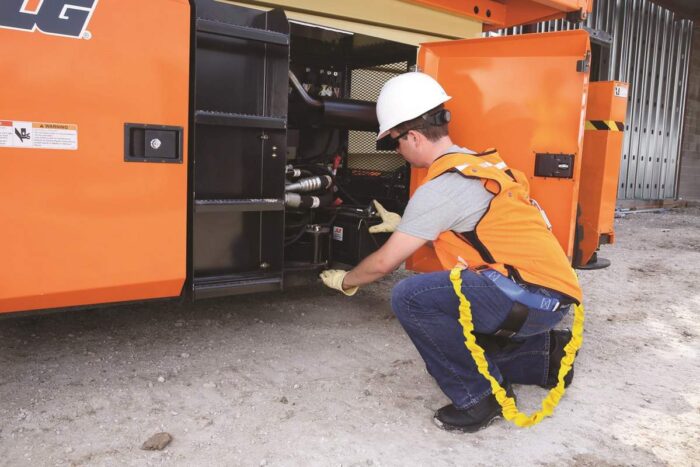
After completing the walk-around inspection, check the machine’s battery, add fuel if necessary (combustion engines only) or add water to the battery (electric models only). Checking an electric machine’s battery water level is critical. The cost of batteries is significant for electric-powered machines, so it is imperative that users take care of them.
Check hydraulic oil levels and ensure the hydraulic system is clean — this is the most important way to ensure the machine’s system stays in top working condition. Clean the area around the filter before changing the filter to avoid possibly contaminating the hydraulic system. Always use the hydraulic oil type recommended by the machine’s manufacturer, keeping the reservoir clean and full.
Next, perform a function check of all systems in an area free of overhead and ground-level obstructions. Examine any accessories or attachments before operating the machine. This includes ensuring the machine’s platform gate latches properly and looking under the machine’s chassis to check for conditions like loose or missing parts that could cause extensive machine damage during operation. Never operate a machine that displays issues during an inspection. Shut down the scissor lift, red-tag it and arrange for repairs as soon as possible.
Technology Aids

New digital tools, like JLG’s Augmented Reality app, can help you save time during the daily inspection process, which will help make your workday run smoother. For example, with the inspection assistant tool on the JLG AR app, you can store all your inspection documentation and get a live view of what needs to be inspected on the machine. This tool can also help you to organize inspection details, such as pictures and notes in a centralized location, to follow a standard process to make sure that no steps are missed and to eliminate the need for paper records.
Maintenance Musts
While daily inspections and walk-arounds are imperative, scissor lifts also require other regular inspections based on their operation hours. A qualified equipment mechanic should inspect the machines every three months or 150 hours, whichever comes first. Machines that have been out of service for more than three months or purchased used should also be inspected before use.
The machine’s service manual should include a preventive maintenance schedule specific to each machine, including proper servicing and maintenance procedures for the machine’s various components. Increase inspection frequency if the machine’s working environment is harsh or you’re using it more frequently and for longer periods of time. ANSI standards mandate that scissor lifts be inspected annually (at least every 13 months). At JLG, we recommend that this task be performed by a factory-trained service technician with extensive knowledge of the manufacturer’s equipment.
Residual Benefits
At some point, you’ll probably have to decide whether to sell your current machine and replace it with a newer model. Performing the right maintenance at the recommended intervals and keeping accurate, detailed maintenance records are important to ensure you get the highest value for your machine when the time comes. When it comes to scissor lift maintenance, don’t be penny wise and dollar foolish. Do the proper inspections and maintenance to keep the machine in perfect operating condition, and it will reward you with higher productivity, lower cost of ownership and higher value at resale. If you take care of your machine, it will take care of you.
Hampden Tener is senior director of project management at JLG.
Scissor Lift Maintenance Checklist
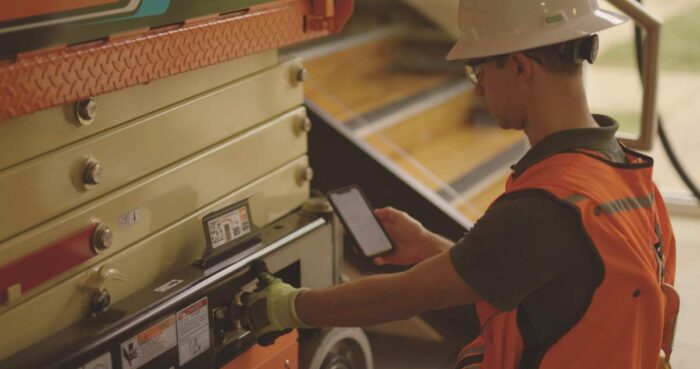
Below are OSHA’s guidelines for scissor lift maintenance. To ensure complete compliance, be sure to reference the machine’s factory-issued manuals.
Operational
- Check all fluid levels including oil, fuel, coolant and hydraulics. Inspect the machine thoroughly for leaks.
- Check the wheels and tires. Look for worn tire treads and cracks or bubbles in the sidewalls. Make sure tire pressure is at the correct psi. Check wheels for any structural damage.
- Test the steering and brakes to ensure they are fully operational.
- Check the battery and charge level to ensure power isn’t lost on the job.
- Test all emergency controls to make sure they are working. This includes horns, gauges, lights and backup alarms.
- Make sure all personal protection devices are in place and working properly. These include safety harnesses, fall protection gear and more.
Structural
Inspect these areas for signs of any problems:
- Air, electric, pneumatic and hydraulic systems
- Insulating components
- Written warnings, placards and instructions
- Mechanical fasteners and locking pins
- Cable and wiring
- Outriggers and stabilizers
- Guardrails
- Loose or missing parts
If any scissor lift components are damaged, missing or not working correctly, do not use the lift until it has been fully repaired.
Battery
Batteries are among the most frequent and highest-cost drivers for scissor lift owners. Batteries that are not properly maintained will degrade over time and require premature replacement. Therefore, inspecting and maintaining batteries is critical to ensure they are adequately charged and have sufficient water levels. These maintenance procedures will help significantly extend a battery’s service life:
- Clean battery banks to remove excess dirt and debris. Make sure batteries stay dry and clean. Otherwise, surface discharge can occur, reducing operating times between charges.
- Run an amp-draw test. Use a high-quality digital battery tester to ensure each battery performs to its recommended specifications.
- Perform a charge test by plugging in the battery charger. Verify all batteries are charging properly and replace any bad batteries. Ensuring each battery is functioning properly will avoid the need to exchange a rented unit or replace the battery onsite.

